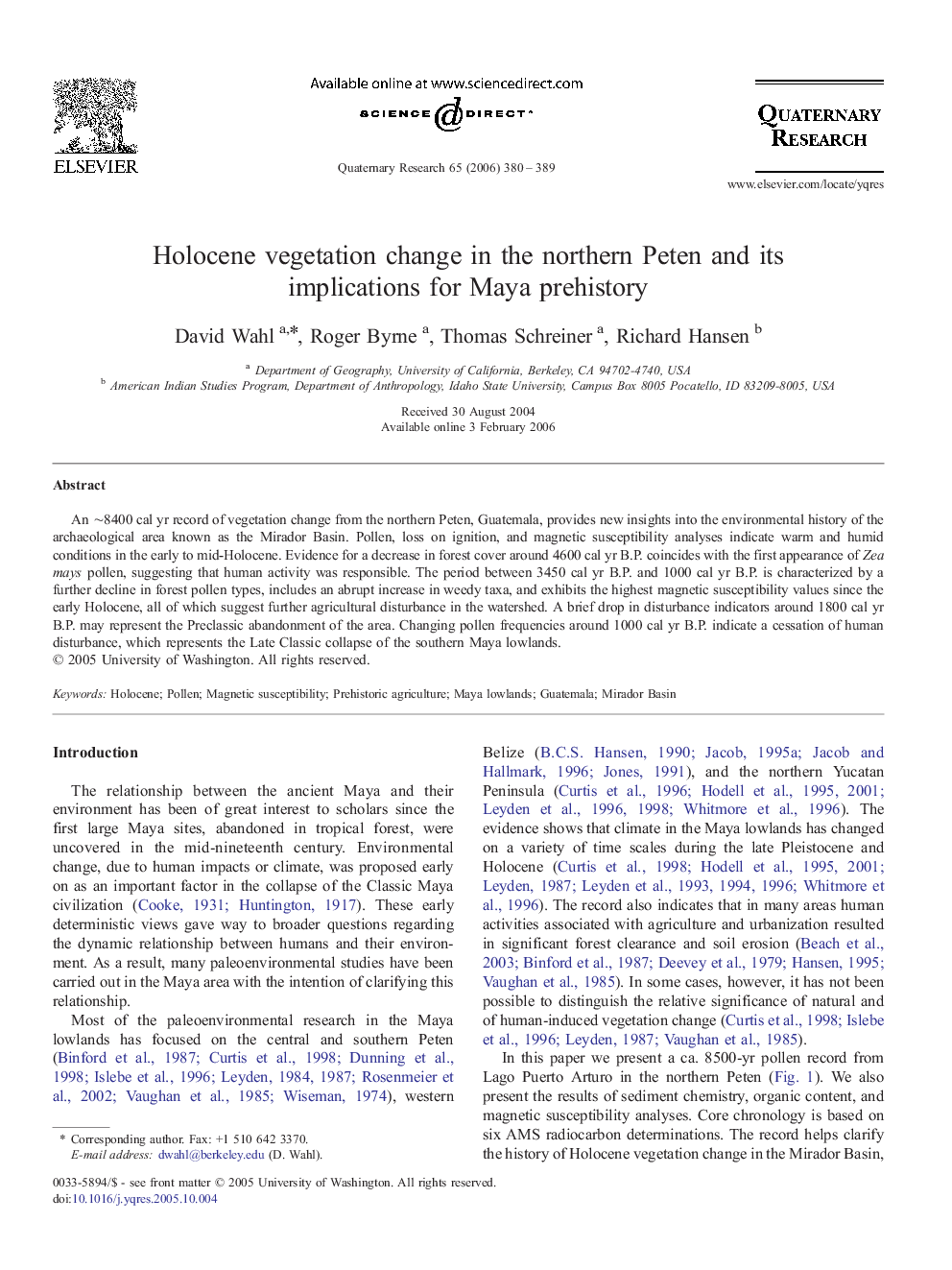| کد مقاله | کد نشریه | سال انتشار | مقاله انگلیسی | نسخه تمام متن |
|---|---|---|---|---|
| 1046238 | 944879 | 2006 | 10 صفحه PDF | دانلود رایگان |

An ∼8400 cal yr record of vegetation change from the northern Peten, Guatemala, provides new insights into the environmental history of the archaeological area known as the Mirador Basin. Pollen, loss on ignition, and magnetic susceptibility analyses indicate warm and humid conditions in the early to mid-Holocene. Evidence for a decrease in forest cover around 4600 cal yr B.P. coincides with the first appearance of Zea mays pollen, suggesting that human activity was responsible. The period between 3450 cal yr B.P. and 1000 cal yr B.P. is characterized by a further decline in forest pollen types, includes an abrupt increase in weedy taxa, and exhibits the highest magnetic susceptibility values since the early Holocene, all of which suggest further agricultural disturbance in the watershed. A brief drop in disturbance indicators around 1800 cal yr B.P. may represent the Preclassic abandonment of the area. Changing pollen frequencies around 1000 cal yr B.P. indicate a cessation of human disturbance, which represents the Late Classic collapse of the southern Maya lowlands.
Journal: Quaternary Research - Volume 65, Issue 3, May 2006, Pages 380–389